#exalted funeral
Explore tagged Tumblr posts
Text










Man, I love Ultraviolet Grasslands. This is the second edition, which came out last year in hardcover. It has a giant interdimensional root vegetable on the cover. I know this is a road trip RPG, so you’d think, “Hm, perhaps a picture of a road,” but no. Root vegetable is actually probably the correct vibe.
For the most part, 2E has more. To make room for that, there’s 50ish extra pages, but also the on-board SEACAT system has been toned down (those rules are now called Synthetic Dream Machine and will be published separately in a more robust form). The new real estate is full of more things to noodle around with: vehicles, pets, spells, rules for caravans (this last is particularly in depth, feels crucial to the experience and I am surprised I didn’t feel its absence in 1E). So many tables. There’s a brand new bestiary. I’ve not thoroughly re-read the main campaign/travel guide, but I don’t think much if anything is changed there, which is OK, I liked that just fine the way it was.
The main thing, though, the main attraction is the art. There is more of it, new, weird, mostly purple. Luka’s got a dizzying talent for creating curiously proportioned robots. His psychedelic landscapes are both strange and welcoming, dangerous but also kind of cozy. I am always down for new Luke Rejec art. And a lot of the old art is bigger. Which is kind of like being new, in its way.
If you missed UVG the first time around, there is really no good reason to skip it this time. So don’t skip it.
#roleplaying game#tabletop rpg#dungeons & dragons#rpg#d&d#ttrpg#Exalted Funeral#ultraviolet grasslands
204 notes
·
View notes
Text
Fight for freedom and master your own fate in Forsaken, a new game from Kyle Tam (MORIAH, Hit The Road Jack) and Exalted Funeral.
#indie ttrpg#ttrpg#gaming#news#exalted funeral#belonging outside belonging#LUMEN#sucker punch#ursula le guin
23 notes
·
View notes
Text
kickstarter

Welcome, traveller, to the fungus-wracked tangle of Dolmenwood, and beware, for all here is not as it seems…
Dolmenwood is a fantasy adventure game set in a lavishly detailed world inspired by the fairy tales and eerie folklore of the British Isles. Like traditional fairy tales, Dolmenwood blends the dark and whimsical, the wondrous and weird.
Streamlined rules and helpful introductory materials guide novice players, while unique new magic and monsters bring a fresh sense of the unknown to veteran role-players. We’re launching the three Dolmenwood core books, plus a range of delectable extras.
Check Out a 76-Page Preview PDF!
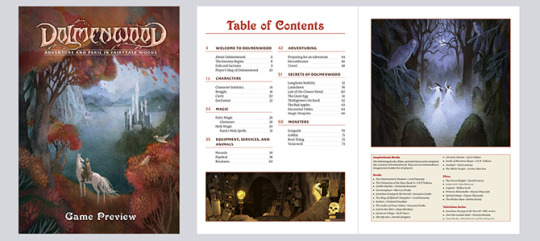
Check out our free 76 page preview PDF of material from the 3 core books!
Preview also available at DriveThruRPG and necroticgnome.com (no account required).

Rife with intrigue, secrets, and magic, Dolmenwood draws travellers of adventurous spirit, daring them to venture within.
Explore the wild places of the Wood, travelling through bramble-choked dells, fungus-encrusted glades, and foetid marshes, bedding down among root and bracken amid the nocturnal babbling of strange beasts.
Unearth treasure hoards in forgotten ruins, haunted fairy manors, dripping caverns, crystal grottoes, unhallowed barrow mounds, and abandoned delvings.
Confront fell beasts, roving fungal monstrosities, terrible wyrms, tricksome fairies, and restless spirits of the long deceased.
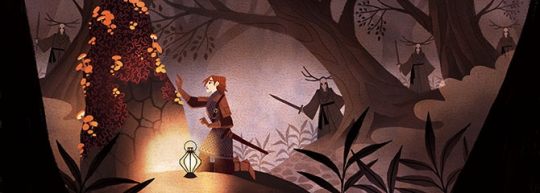
Recover saintly relics and shrines lost in the befuddling tangle of the Wood, gaining the favour of the Church by returning them to civilisation.
Forage for weird fungi and herbs in the untrod depths of the woods, many with useful magical powers—and many that can be sold for profit.
Strike against Chaos, defending civilisation from the encroaching forces of the wicked, half-unicorn Nag-Lord who lurks in the corrupted northern woods.
Unravel secrets of deep magic, charting the obelisks, dolmens, and ley lines littered throughout Dolmenwood—but beware the sinister Drune cult that wards them.
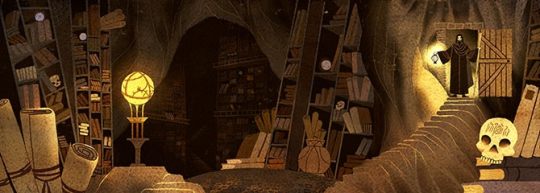
Seek the counsel of witches and hags, masters of magic that can heal, hex, or divine the future.
Meddle in the affairs of the nobility, allying with a noble house in its intrigues and power plays in the courts of High-Hankle and Castle Brackenwold.
Journey along fairy roads, ancient magical paths bordering on the ageless realm of Fairy that allow travel throughout Dolmenwood—and perchance to realms beyond.
Return to the homely hearth to share tales of peril with quaint locals over a mug of ale and a well-stoked pipe.


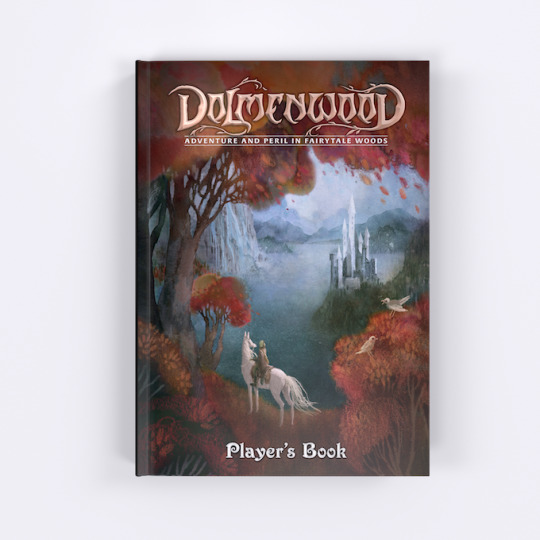
The Dolmenwood Player’s Book (A4 size, Smyth-sewn hardcover, 192 pages approx., 1 ribbon marker) contains the complete game rules plus all character options.
Player’s introduction to the intrigues and mysteries of the forest realm of Dolmenwood.
Familiar character creation with the six classic stats, level and XP, Hit Points, and Armour Class.
6 playable kindreds: goat-headed breggles, starry-eyed elves, tricksome grimalkin cat-fairies, everyday humans, fungus-riddled mosslings, and bat-faced woodgrues.
9 character classes: cleric, enchanter, fighter, friar, hunter, knight, magician, minstrel, and thief.
4 kinds of magic: mighty arcane workings, fairy glamours and runes, holy prayers to the host of saints, and the odd knacks of mosslings.
Detailed, flavourful equipment with lists of adventuring gear, armour, weapons, mounts, hounds, inn lodgings, tavern fare, beverages, pipeleafs, fungi, and herbs.
Simple core rules: roll a d6 or a d20 plus modifiers versus a target number.
Easy-to-follow procedures for travel, camping, foraging, dungeon delving, encounters, combat, and downtime.
Full examples of play and introductory materials make the game easy to learn.
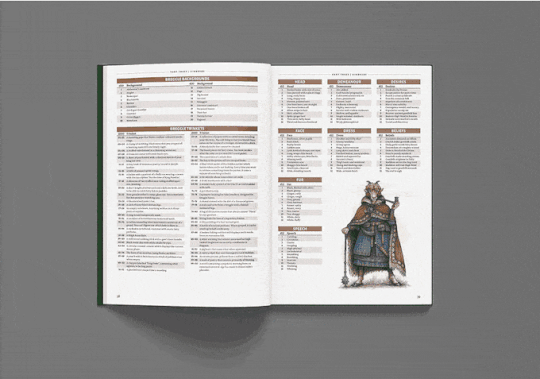


The Dolmenwood Campaign Book (A4 size, Smyth-sewn hardcover, 464 pages approx., 2 ribbon markers) presents a lavishly detailed campaign setting, ready for years of adventure.
Referee’s introduction delving into the regions and history of Dolmenwood.
Mysterious lore of the lost shrines, standing stones, ley lines, fairy roads, Wood Gods, and fairy nobles.
7 major factions: the Chaos-godling Atanuwë, the wicked fairy Cold Prince, the sorcerous Drune, the human nobility, the breggle nobility, the monotheistic Pluritine Church, and the enigmatic witches.
12 settlements detailed with major sites and NPCs and beautiful maps.
Expanded procedures for weather, getting lost, encountering monsters, fishing, foraging, and hunting.
200 pages of fantastic locations waiting to be explored.
Over 280 NPCs with their own desires and schemes.
Referee advice on starting and running campaigns, awarding XP, designing adventures, and creating dungeons.
Starter adventure to get you right into the action.
Hundreds of magical artefacts from enchanted oddments to mighty relics.
Over 250 rumours to drive adventure.
Easy-to-reference presentation designed to minimise page flipping and prep time.
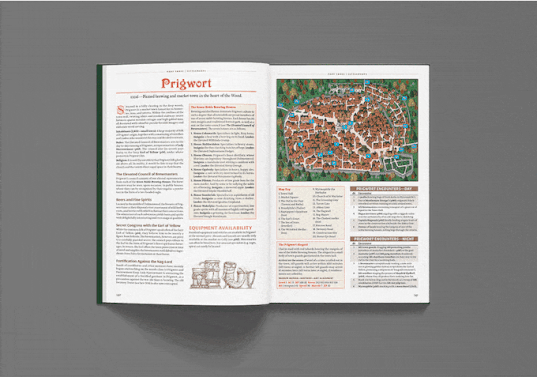

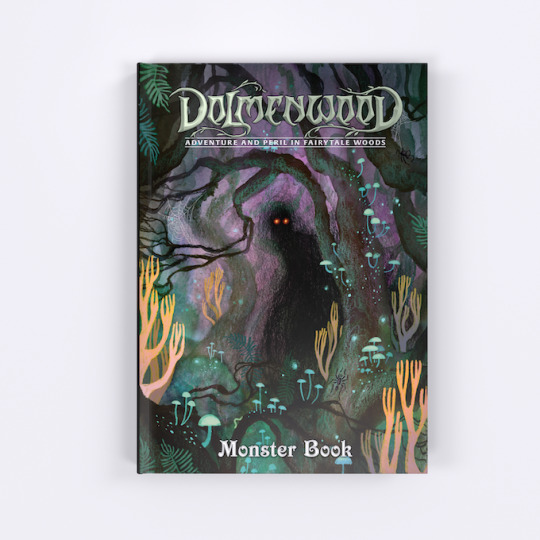
The Dolmenwood Monster Book (A4 size, Smyth-sewn hardcover, 128 pages approx., 1 ribbon marker) details a bestiary of creatures that lurk under Dolmenwood’s eaves.
87 fully detailed monsters dripping with flavour, including encounter seeds and beautiful illustrations.
48 mundane animals including unique Dolmenwood fauna such as gobbles and gelatinous apes.
9 types of of normal humans: anglers, criers, fortune-tellers, lost souls, merchants, pedlars, pilgrims, priests, and villagers.
27 NPC stat blocks for common adventuring classes.
Adventuring party generator for rolling up NPC adventurers on quests of their own.
Over 300 rumours describing monsters as featured in local folklore.
Monster creation guidelines to keep players on their toes.
Easy-to-read stat blocks and bullet point presentation for quick reference.
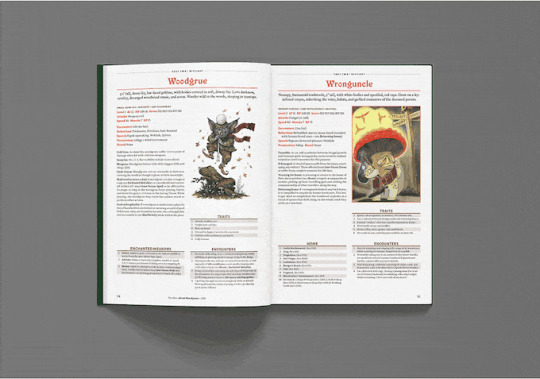

Dolmenwood uses a lightly customised version of the acclaimed Old-School Essentials rules system, tailored to Dolmenwood and with some major quality-of-life upgrades. Players of all editions of Dungeons & Dragons will find the Dolmenwood rules very familiar.
Ability Scores: Roll for 6 ability scores: Strength, Intelligence, Wisdom, Dexterity, Constitution, Charisma.
Kindred, Class, and Level: 6 kindreds, 9 classes, levels 1–15.
Hit Points (HP): Roll 1d4, 1d6, or 1d8 (determined by Class) for HP. Re-roll 1s or 2s. 0 HP is dead!
Armour Class (AC): AC 10 = unarmoured, better protection raises AC.
Initiative: Streamlined side-based initiative makes combat fast and exciting: each side (monsters / adventurers) rolls 1d6 each Round—highest roll acts first.
Attacking: Roll 1d20, add Attack bonus and modifiers, try to beat the target’s AC, roll damage.
Saving Throws: Roll 1d20, add modifiers, try to beat a fixed target number on the character sheet.
Ability Checks: Roll 1d6, add ability modifier, 4 or higher succeeds.
Skill Checks: Roll 1d6, add modifiers, try to beat a fixed target number on the character sheet.
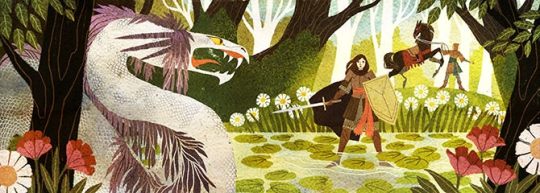
As an adventure game in the heritage of the RPGs of the 1970s and 1980s, Dolmenwood espouses the danger and excitement of the old-school play style.
Emergent character creation: Unique and surprising Player Characters emerge from quick random rolls, rather than from detailed character build optimisation.
Exploration, puzzles, and tricks: Players’ ingenuity and creativity are challenged by devious puzzles, traps, and tricks. Simply rolling dice to succeed is often not an option!
Creative thinking encouraged: Easy-to-learn rules for exploration, encounters, and combat provide referees with a robust framework from which to make impromptu rulings on players’ outside-the-box antics.
Fast, exciting combat: Combat encounters are quick to play out, leaving plenty of time in game sessions for exploration and role-playing. As in real life, combat is not fair or balanced—players whose clever tactics tip the balance in their favour will prevail!
Zeroes to heroes: Characters advance from humble beginnings to heights of great power.
Open-ended sandbox play: Campaigns focus on freeform stories evolved over the course of play, with players driving the action.

Kickstarter campaign ends: Sat, September 9 2023 4:59 AM BST
Website: [Exalted Funeral] [facebook] [twitter] [instagram] [youtube]
38 notes
·
View notes
Text
I’m excited to Play Isle of Ixx! If anyone wants to join, which it out. We have 3/5 players already!
#ttrpg#indie games#adventure#dungeons and dragons 5e#osr#rules lite#RoleVTT#exalted funeral#rpg#d&d#fantasy
0 notes
Text

The Dance of Death
German, 18th century
"The Dance of Death originates in mediaeval plays and folk rituals performed on the Feast of the Holy Innocents (28 December), and in funeral sermons. In the most popular version, Death (in the form of a skeleton) dances in succession with people representing particular social ranks (Pope, emperor, king, lawyer, peasant, etc.) and takes away each in turn, demonstrating that nobody however exalted in this life, can escape death. Conversely, nobody, however humble in this life, is in the end worse off than the rich and mighty"
source
#the dance of death#danse macabre#totentanz#18th century art#death#death in art#rituals#art#painting
174 notes
·
View notes
Text
The King of the Cats
A fun little folklore plot that shows up in Scotland, Ireland and England is the death (and succession) of the King of the Cats.
The story usually begins with a man being told, either by a cat or a disembodied voice, to inform a certain person that another person has died. Both persons are called by their full name, usually strange names, which are unfamiliar to the protagonist. When the protagonist comes home he tells what a strange thing happened to him. Upon overhearing the message the house cat jumps up and declares that they are now the King of the Cats, immediately leaving never to be seen again.
There are other versions of this type of story, more widespread over Europe, where there cat may be a fairy or troll in disguise. Or there isn’t a cat at all, but a house gnome or elf instead, and the announced death is that of a relative or enemy. But it’s the concept of a King of the Cats who can be succeeded by a cat that is currently an ordinary house cat, that delights me so.
The name of the deceased Cat King and the successor differ per story:
In this version from Lancashire they are called Doldrum and Dildrum.
In Joseph Jacobs’ version, which is an amalgamation of several English variants, they are called Tom Toldrum and Tom Tildrum. (This version even includes a whole feline funeral procession.)
The oldest recorded version of this story is from the Beware the Cat by Baldwin (written 1553, published 1561). Only the dead cat in question (Grimalkin) is never called the king of the cats, and the cats receiving the message (Puss) is a female cat, who is sad to leave her home.
In this Scottish version the successor is unnamed, but the dead Cat King is called Old Peter.
The stories sadly do not say a lot about what it means to be the King of the Cats, apart from some mentioning a sceptre and crown, but Lady Wilde does have something to say about him in her Ancient Legends, Mystic Charms, and Superstitions of Ireland (1888):
A most important personage in feline history is the King of the Cats. He may be in your house a common looking fellow enough, with no distinguishing mark of exalted rank about him, so that it is very difficult to verify his genuine claims to royalty. Therefore the best way is to cut off a tiny little bit of his ear. If he is really the royal personage, he will immediately speak out and declare who he is; and perhaps, at the same time, tell you some very disagreeable truths about yourself, not at all pleasant to have discussed by the house cat.
Her second example has a content warning for animal cruelty, so I will put it underneath a cut, but it does imply that the Cat King might be capable of reincarnation…
A man once, in a fit of passion, cut off the head of the domestic pussy, and threw it on the fire. On which the head exclaimed, in a fierce voice, "Go tell your wife that you have cut off the head of the King of the Cats; but wait! I shall come back and be avenged for this insult," and the eyes of the cat glared at him horribly from the fire. And so it happened; for that day year, while the master of the house was playing with a pet kitten, it suddenly flew at his throat and bit him so severely that he died soon after.
#fuel for my sister <3#folklore#cats#cat#king of the cats#cat king#english folklore#irish folklore#scottish folklore
149 notes
·
View notes
Text
Some interesting little tidbits about the world that are gleaned from Mementos found: It looks like there's already an almost full list here.
After the Exalted March against the Dalish, the Antivan crows signed some kind of treaty or agreement promising to take action if another march against the elves was going to take place. It seems they did 'stand with the Dales' in some form.
The Crow mementos in general seem to indicate when they realised the influence they had, they also began to discuss how they should use that influence, and the responsibilities they had.
When an archdemon is slain, the Grey Wardens recover a fang to keep as a trophy.
The Wardens keep a record called The Book of Ashes to record not the dead, but the Wardens who survived the Blights.
Scrying exists to tell the contents of certain containers or the function of certain magical items.
The Shadow Dragons disguise their manifestos and propaganda as spellbooks, in the hope the Venatori will pick them up and read them without realising what they are, and thus have their mind changed.
The Wardens wear blue because it's a local dye available in the Anderfels - I think we can probably say 'Anderfels Azure' is derived from Brona's Bloom. Poetic, as it's one of 'the first to fade when blight emerges' and that they mell of warm honey and rainy spring mornings—things the blight forgets.' The uniform is a reminder of what the Blight takes, and a hope for its return all the same.
Antivans typically have coffee (with or without an alcoholic addition) after dinner.
The Antivan Crows might once have been the Antivan Ravens. Both birds appear in early motifs, until finally crows won out.
Somehow, Blackwall's carved rocking griffon (or one of them) found its way into the Dellamorte estate.
Early post-Veil writings are found in a source called 'The Days of Death,' in which an ordinary elf records the realities of mortality, and grapples with the new need for food and shelter. Other early writings indicate they were attempting to map their new home.
One of the ways Kal-Sharok survived the Blight was by abandoning the caste system.
There's a scandalous... hit piece? book on the Inquisition, called 'Inquisition Exposed.' It's illustrated. Edit: My bad, it's smut. It's just smut.
In Nevarra, it's popular to give children coming of age a gift of necromantic, allegorical illustrations.
During the Storm Age in Nevarra, there was a trend of artists mixing their own blood into the paints. They were discouraged by the Watches as it kept leading to works of art getting possessed.
There's an undead thief making troubled around Nevarra City known as the 'half-made bandit'. He escaped from an anatomy class.
A Cassandra mention when considering the funeral of a Nevarran prelate.
Some spirits prefer possessing inanimate objects over the living.
Emphasising the Mourn Watch and the Mortalitasi in general's complex relationship with the Chantry, once a (probably possessed) Chasind shaman ended up sheltering with them.
Ancient Qunari did not have horses.
There seems to be, or have been, an element of ancestor worship in Qunari religion.
#dragon age#dragon age spoilers#dragon age lore#that's all i got from the mementos alone#it might be stuff mentioned elsewhere too!#just thought these were interesting
135 notes
·
View notes
Photo

Enheduanna
The Akkadian poet Enheduanna (l. 2285-2250 BCE) is the world's first author known by name and was the daughter of Sargon of Akkad (Sargon the Great, r. 2334-2279 BCE). Whether Enheduanna was, in fact, a blood relative of Sargon's or the title was figurative is not known.
It is clear, however, that Sargon placed enormous trust in Enheduanna in elevating her to the position of high priestess of the most important temple in Sumer (in the city of Ur) and leaving to her the responsibility for melding the Sumerian gods with the Akkadian ones to create the stability his empire needed to thrive.
Further, she is credited with creating the paradigms of poetry, psalms, and prayers used throughout the ancient world which led to the development of the genres recognized in the present day. Scholar Paul Kriwaczek writes:
Her compositions, though only rediscovered in modern times, remained models of petitionary prayer for . Through the Babylonians, they influenced and inspired the prayers and psalms of the Hebrew Bible and the Homeric hymns of Greece. Through them, faint echoes of Enheduanna, the first named literary author in history, can even be heard in the hymnody of the early Christian church. (121)
Her influence during her lifetime was as impressive as her literary legacy. Entrusted by her father with great responsibility, Enheduanna not only exceeded those expectations but changed the entire culture. Through her written works, she altered the very nature of the Mesopotamian gods and the perception the people had of the divine.
Life
Enheduanna's name translates as 'High Priestess of An' (the sky god) or 'En-Priestess, wife of the god Nanna'. She came from the northern city of Akkad and, as Kriwaczek notes, "would have had a Semitic birth name on moving to Ur, the very heartland of Sumerian culture, she took a Sumerian official title: Enheduanna – 'En' (Chief Priest or Priestess); 'hedu' (ornament); 'Ana' (of heaven)" (120).
She organized and presided over the city's temple complex, the heart of the city, and held her own against an attempted coup by a Sumerian rebel named Lugal-Ane who forced her into exile. The Akkadian Empire, for all the wealth and stability it brought to the region, was constantly plagued by uprisings in the various regions under its control. One of Enheduanna's responsibilities in the region of Sumer would have been to keep the populace in check through religion.
In the case of Lugal-Ane, however, she seems to have been bested, at least initially. In her poem The Exaltation of Inanna, she tells the story of being driven from her post as high priestess and cast into exile. She writes a plea for help to the goddess Inanna requesting her to petition the god An for help:
Funeral offerings were brought, as if I had never lived there.
I approached the light, but the light scorched me.
I approached the shade, but I was covered with a storm.
My honeyed mouth became scummed. Tell An about Lugal-Ane and my fate!
May An undo it for me! As soon as you tell An about it, An will release me. (lines 67-76)
Inanna apparently heard her prayer and, through divine intercession, Enheduanna was finally restored to her rightful place in the temple. She seems to have been the first woman to hold this position in Ur and her comportment as high priestess would have served as an exemplary model for those who followed her.
Continue reading...
116 notes
·
View notes
Text
i'm working my way through the final companion quests and i finished Bellara's last night. i feel like my criticism of her story is the same, broader critique i've already discussed which is that she's never really given any time or space to reckon with the truth of the elven gods, she's never allowed any real sympathy or a crisis of faith or even just a genuine conversation about having to literally kill her gods that she's spent her entire life studying... this quest almost gets there, but it's once again... hindered by racism.
i would have loved this quest otherwise, in general Bellara is one of my favorite companions and her character is one of the strongest in the game. plus i like a good sibling dynamic, and i loved her scenes with Cyrian and even the final funeral procession. but the context they're in is frustrating. we don't need to teach Bellara the dangers of pursuing elven history, we already know, she already knew even before this, and now the game has completely demonized the Evanuris beyond a doubt and even blamed Bellara for it herself. we don't need Bellara to "learn her lesson." it's redundant and racist, especially the final choice!
this choice (Destroy the Archive or Preserve It) should NOT be up to Rook. this is when faction and companion approval could have come into play, but unfortunately the reputation system in this game is basically nonfunctional. if it did actually matter, then maybe if Rook has high reputation with the Veil Jumpers, Bellara could ask their opinion, but otherwise, why would she leave the fate of a priceless link to elven history up to Just Some Guy? especially if Rook isn't even elven!
Dalish culture is still valuable, it's worth respect and worth preserving regardless of the Evanuris. this confrontation with Anaris should have made her even more determined to do exactly that, to embrace and protect her culture and explore the truth of their history within the Archive, to share it with her people and keep them safe, rather than just blindly destroy it. this could have been her big emotional catharsis moment, with Rook there to encourage her but otherwise let her be the one to make her own choice and ultimately stop Anaris and save the Archive. maybe Cyrian does always die, but he's her link to the Archive that strengthens her resolve regardless. and depending on how Rook approached it (insisted that she would have to kill him versus encouraging her to try and get through to him) it could result in Bellara either opening up and sharing more about the Archive or hardening and closing herself and the Archive off completely. the funeral procession could change depending as well.
i don't know how the funeral procession changes currently, if you destroy the Archive, but if you save it, i do really appreciate those final scenes with her. we even get actual acknowledgment of the Exalted Marches and the reality of the current elves and their enslavement. Bellara finally gets to express herself and participate in her culture without having to feel guilty or apologize. i just wish she was given this respect beyond this single scene, and that she had more of a voice overall and could challenge both Harding and even Solas, and that the game didn't have to punish her before we got here.
#i do think the funeral procession does a LOT of heavy lifting with this quest. if we didn't have that it would be. incredibly worse lol#im sorry bellara..........#also i really do wish hardening worked like it did in origins. i dont really notice any difference with neve except i lost some of her#skill trees. which could be interesting if the mechanic was matched with any kind of consequence in game as well#or even just a rivalry system...... god i miss origins and da2#datv critical#datv spoilers#da posting
37 notes
·
View notes
Text
Writing Notes: August
August, eighth month of the Gregorian calendar.
It was named for the first Roman emperor, Augustus Caesar, in 8 bce.
Recorded from Old English, the name comes from Latin augustus ‘consecrated, venerable’.
Its original name was Sextilus, Latin for “sixth month,” indicating its position in the early Roman calendar.
One of the earliest evidence for august is from 1594, in a translation by Robert Ashley, translator and book collector.
August is of multiple origins. Partly a borrowing from French. Partly a borrowing from Latin.
As an adjective
1. [1594-] Inspiring or worthy of respect (originally on account of birth or position in society); impressively eminent or respected; imposing, reverend, worshipful. Sometimes as an honorific epithet.
"To mingle with a body so august." —Lord Byron, Two Foscari iv. i, in Sardanapalus 259
"We have a human sufferer in Him—the augustest indeed that ever shared our flesh and blood." —R. C. Trench, Sermons in Westminster Abbey xiv. 152
"I would happily relax my hold if you honorably promise to accompany me to my august superior whom I unworthily serve." —H. H. Skinner, Jiu-jitsu 40
2. [1602-] Inspiring reverence and admiration; impressing the emotions or imagination as magnificent; solemnly grand, stately, majestic.
"The funeral was long remembered as the saddest and most august that Westminster had ever seen." —T. B. Macaulay, History of England vol. IV. 534
"[It] renews its ancient glance with an auguster beauty." —J. Martineau, Essays Philosophical & Theological 2nd Series 149
"Little open emotion was evident in the august halls of the Court." —B. Doherty, Gun Control on Trial vi. 110
3. Having great importance and respect in society 4. Marked by majestic dignity or grandeur
Synonyms & related words
baronial, colossus, cosmical, dignified, distingué, exalted, formidable, Homeric, magisterial, opulent, palatine, pantheon, personage, redoubtable, resplendent, splendiferous, titan, uncrowned
Sources: 1 2 3 4 5 ⚜ Writing Notes & References
#august#writing notes#writeblr#writers on tumblr#writing prompt#poets on tumblr#literature#spilled ink#dark academia#poetry#langblr#booklr#linguistics#words#writing ideas#creative writing#writing inspiration#writing inspo#writing reference#light academia#studyblr#writing tips#writing advice#writing resources#here's my entry for all the august posts i'm seeing hope u like it
55 notes
·
View notes
Text

Whimsical, but also dangerous. This week on the Vintage RPG Podcast, we talk to Jean deMers about Ballads of Oræd, forthcoming from Exalted Funeral. A setting book for Old-School Essentials, it's a 232-page gazetteer of a mysterious world full of music, talking animals and, of course, horrible monsters and dangerous locales. It's also a massive portfolio of deMers' evocative, Tarot-like art, which will surely fill your head with new ideas all on their own. It's a dream, full of strange songs.
#roleplaying game#ttrpg#tabletop rpg#dungeons & dragons#rpg#d&d#podcast#Exalted Funeral#Ballads of Oræd#Jean deMers
42 notes
·
View notes
Text

When the Greeks sacked Troy, Aeneas retreated to Mount Ida, carrying his father Anchises on his shoulders and carrying his son Ascanius. His wife Creusa died in flight. He reigned for a time in Ida, then undertook a long voyage across the Mediterranean.
This Trojan hero went through several adventures in which different deities participated including his mother, Venus (Afrodita) . After his father's death in Sicily, a storm blew him astray and washed him onto the shores of Carthage.

Aeneas tells Dido the misfortunes of the Trojan city. Oil on canvas by Pierre-Narcisse Guérin (1815) Louvre, Paris.
With the intervention of the goddess Venus, queen Dido of Carthage fell in love with Aeneas and wanted them to marry, uniting their lineages. But Jupiter opposed it and sent Mercury to warn him that he must continue his journey and fulfill his destiny.
Dido, outraged at being abandoned , cast a curse declaring that her people and the people descended from Aeneas would be enemies. After this, she stabbing herself with a sword on a pyre.

Death of Dido. Oil on canvas by Guercino (1631)
Back in Sicily, Aeneas celebrated great funeral games in memory of his father, who appeared to him to tell him that he must go to Cumae and descend into the underworld. In Cumae, Aeneas succeeded in having the Sibyl open the gates of Hades for him.
There he met the shadow of Dido, but he also saw his father, who in the Elysian Fields revealed to him the glorious destiny of the people he was to found in Italy.

Aeneas and the Cumaean Sibyl. Oil on canvas by François Perrier (1646)
He reached the mouth of the Tiber and finally entered a city called Pallantium on the Palatine Hill. There, after going through several epic situations, he married Lavinia, only daughter of Latinus, king of the Latins, and founded the city of Lavinium, named after his wife.
Aeneas disappeared in the middle of a storm and was taken to Olympus and crowned by his mother Venus. His eldest son Lullius, from whom the Julii descend, founded Alba Longa the hometown of Romulus and Remus.
According to Livy, Lullius is the son of Aeneas and Lavinia, and seems to distinguish him from Ascanius son of Aeneas and Creusa. Silvius, son of Lullius, succeeded him on the throne of Alba Longa. Dionysius of Halicarnassus is the one who says that Silvius was the son of Aeneas and Lavinia, and therefore half-brother of Lulilus (Ascanius)
Years later, Numitor, maternal grandfather of Romulus and Remus and direct descendant of Silvius would be king of Alba Longa

Roman bas-relief, 2nd century: Aeneas lands in Latium leading his son Lullius (Ascanius); the sow identifies the place to found his city : Alba Longa
Over time, coming into contact with civilizations in the Eastern Mediterranean, the Romans realized that while everyone else had legends of heroes, epic wars, and several divinities interacting with humans at each event, they only had Mars in their founding story; twins thrown into a river, suckled by a wolf in a cave, adopted by a humble shepherd. And one of the twins ends up dying in a fight with the other.

Romulus and Remus, suckled by the wolf, found by Faustulus on banks of Tiber. Fresco by Giuseppe Cesari (1568-1640)
Augustus commissioned the great Roman poet Virgil to create a epic worthy of Rome, but without annulling its legendary founding history.
Through the Aeneid, Rome acquired a prestigious past; a mystical explanation of the three Punic Wars and the destruction of Carthage. Julia gens obtained a divine origin, giving even more legitimacy to the ruling dynasty. Furthermore, this epic exalts the Roman virtues that Augustus so wanted to restore and impose by law.
According to Roman historians, Augustus' sister Octavia faint from emotion upon hearing Virgil reading the Aeneid.

Virgil Reading the Aeneid to Augustus and Octavia. Neoclassical painting by Jean-Joseph Taillasson, 1787
In the story of the Trojan War as told by Homer, Aeneas appears as a secondary character, after heroes such as the Greek Achilles or the Trojan Hector. Meanwhile Virgil made him a protagonist in an epic that linked the fall of Troy and the founding of Rome.

The Siege of Troy. Oil on canvas by French School ( 17th century)
#ancient rome#history#mythological painting#oil painting#oil on canvas#fresco#the aeneid#roman empire#greco roman
40 notes
·
View notes
Text
So I just noticed that I am not seeing anyone mention The Book of Gaub on this website, which is a crying shame.
Being straightforward with you, I’m one of the authors—but even so it’s one of my favorite ttrpg supplements ever. Not just in the quality of the writing and art within but the quality of the book itself as an object. I mean look at this!


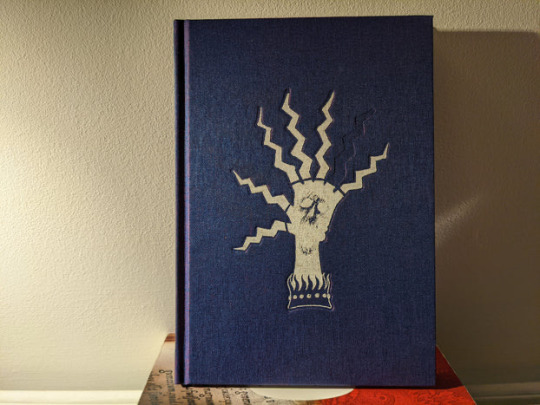
That embossed cover, that duo-tone book cloth that is just the right amount of rough on the fingers, and that beautiful seven fingered hand by Charles Ferguson-Avery.
Within we have the lovely dark writing of seven different and equally talented authors fused together by the expert editing of Paolo Greco of Lost Pages.
A finger trails the letters across a dusty tome. A finger points the way down a dark haunted alley. A finger feels for the pulse of life on a long decayed corpse. A finger scratches the floorboards beneath your feet. A finger chewed down to a white bone. A finger that is not there. A finger catches a shed tear and slides it into a bottle. These are the Seven Fingers of the Hand of Gaub.
Seven Fingers which lay out the theme for forty nine hideous spells and associated horror mini-fiction, forty nine disturbing magical paraphernalia, one hundred calamities, twenty monsters (and how to twist them to your usage) and twenty hooks for if you’ve not already found a tale to put fear into your players.
And the art—oh the art. By author-artists Charles and Rowan, Enoch Duncan, Trevor Henderson and Jonathan Newell.
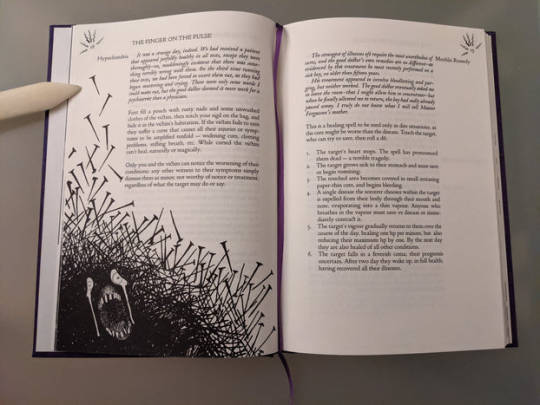

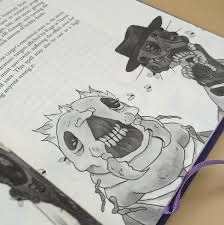
Did I mention it has a soundtrack? It has a soundtrack, a deep chilling ambience for your table made by the talented Ethereal Girl
And if you don't trust me, how about a couple reviews?
youtube
youtube
Oh and of course! Where do I buy this most delicious of horrors? Well you can get it straight from Lost Pages but it is also carried by multiple indie distributors such as Spear Witch, Peregrine Post, Exalted Funeral, Noble Knight Games, Soul Muppet and more!
#ttrpg community#roleplaying games#indie ttrpg#ttrpg design#artwork#ttrpg#ttrpg art#horror#horror writing#horror games#horror ttrpg#magic#spells#monsters#Youtube
195 notes
·
View notes
Text
Hey so Solas clearly lived at Skyhold or owned it in some capacity, in the frostbacks. So do you think this was the kinda general area he hung out in all the time? Like most of his holdings/outposts/hideouts being in the ferelden/orlais region makes sense. As far away from arlathan as he can reasonably be, just off the maps we have.
So did he also fuck around in the dales? cause I really cannot stop thinking about the delicious poetic irony of the home of his ostensibly failed rebellion later becoming the DALES. the land they gave to the elves, where they recreated elvhenan to the best of their abilities, where they were brutally killed and marched upon. It strikes me as therefore not a conincidence in inquisition that you come upon that big shrine to fen'harel in the exalted plains, the dirthavaren.
Imaging dalish elves and ancient freed elves alike calling it that, the promise. The place you could go if the dread wolf freed you. It almost makes you start to understand why solas really hates halamshiral so much. what a mockery, what a place to try to recreate the thing he gave everything to destroy.
I say all this partially because I am very interested in the way inquisition has this like archaeological/anthropological approach to the lore, where history is layered upon history and blood seeps into the sites of history. I love love love walking through the hinterlands and learning the history of arls and their castles for their lovers right next to the story of tyrdda bright axe and especially the tree in the middle of the farm lands, grown so long ago as a funeral tree for the elf she loved, the memory of the blight and the scars of the wars present and past. basically all the regions are like this, laying imperial ruins and ancient elvhen ruins beside each other! the horrors never cease and the land is fertile with history. so much of the game is shouting in your face that history is starting to become inescapable. try as you might, corypheus is here! history is real and mythal is here and now youre stepping through eluvians and chasing a legend that youve been living in the whole time without realizing. but every landmark you claim has been trying to tell you the entire time, we've been here before.
And beyond just that simple way of literally what happened in the land, this lasting importance of these lieux de memoir, or memory site (googleable words for anyone just realizing they might be interested in collective memory studies like i obviously am), anyway that is what solas is trying to tell you about the fade too! These events never truly end, you can go to sleep in this spot and witness the horrors echoing across time, spirits who can't stop acting it out over and over! well, they did just let us know elves were originally spirits. and now they can't stop going through these cycles, stuck in place. the land is painted in layers of blood chipping away. Solas has watched it happen again and again, of course he begins to resent the prisoner in the cave who cant just turn around and see that its a shadow.
anyway all this prompted by a tweet I saw that mentioned solas laying in uthenera AT skyhold, and I started to think about what he might have been able to see in the fade from there, and accidentally started crying thinking about him watch havard carry andraste's ashes to haven. and his land in the dales might be something I just hallucinated but its real to me now.
#uses fandom meta to hypnotize you into reading nora and halbwachs#IM SUPPOSED TO BE DRAFTING RIGHT NOW#solas#dai#dragon age#he speaks#finns dragon age blathering
14 notes
·
View notes
Text
Last.fm Monthly: October
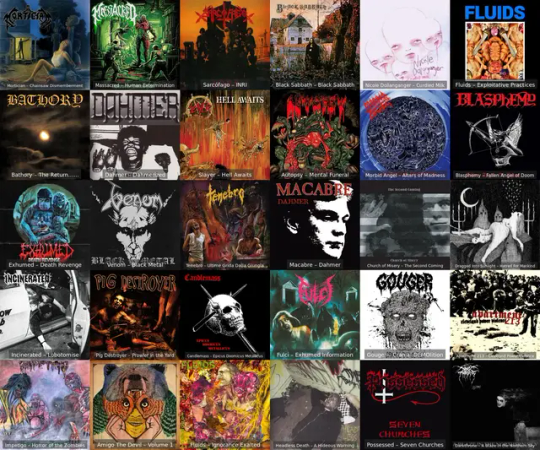
• Mortician - Chainsaw Dismemberment
• Massacred - Human Extermination
• Sarcófago - INRI
• Black Sabbath - S/T
• Nicole Dollanganger - Curdled Milk
• Fluids - Exploitative Practices
• Bathory - The Return......
• Dahmer - Dahmerized
• Slayer - Hell Awaits
• Autopsy - Mental Funeral
• Morbid Angel - Altars of Madness
• Blasphemy - Fallen Angel Of Doom
• Exhumed - Death Revenge
• Venom - Black Metal
• Tenebro - Ultime Grida Dalla Giugla
• Macabre - Dahmer
• Church Of Misery - The Second Coming
• Dragged Into Sunlight - Hatred For Mankind
• Incinerated - Lobotomise
• Pig Destroyer - Prowler In The Yard
• Candlemass - Epicus Doomicus Metallicus
• Fulci - Exhumed Information
• Gouger - Cranial DEMOlition
• Apartment 213 - Cleveland Powerviolence
• Impetigo - Horror of the Zombies
• Amigo The Devil - Volume 1
• Fluids - Ignorance Exalted
• Headless Death - A Hideous Warning
• Possessed - Seven Churches
• Darkthrone - A Blaze In The Northern Sky
#grindcore#thrash metal#powerviolence#doom metal#halloween#brutal death metal#mortician#church of misery#folk music#alt pop#first wave black metal#death metal#heavy metal#black metal
13 notes
·
View notes